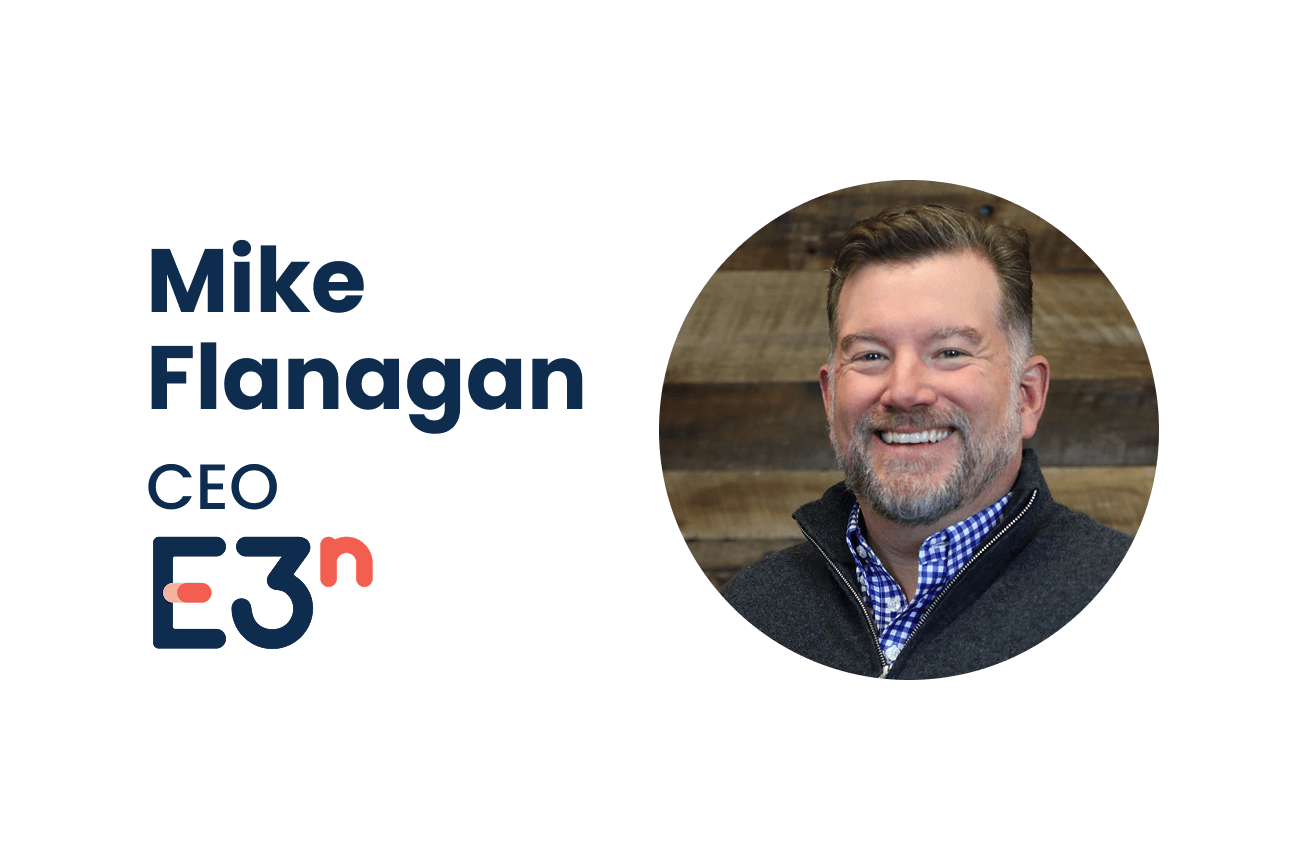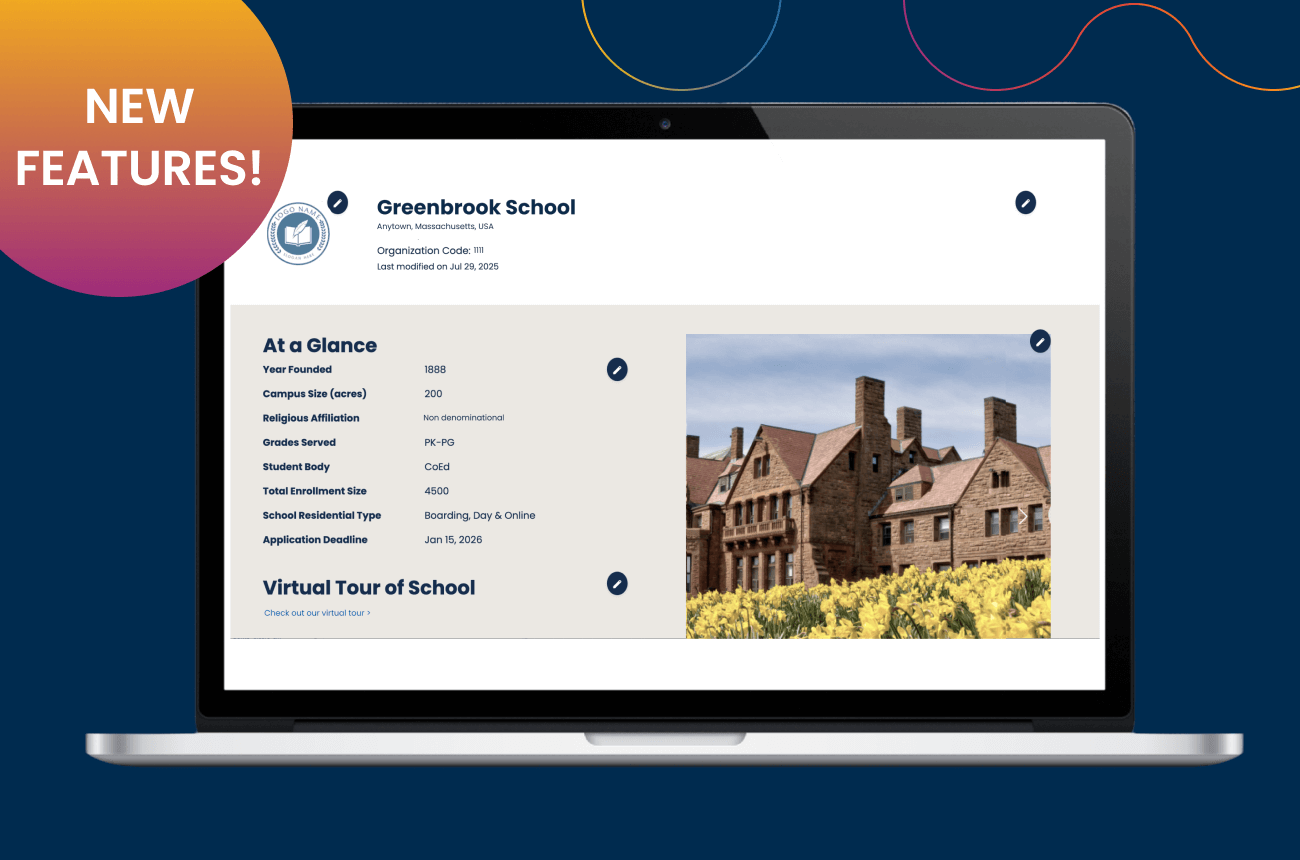Admission Office Profiles: East Coast

From The Yield, Winter 2014
Name of School: Saint David’s School, New York, NY
Enrollment: 421, PK–8
Type of school: All boys, Day
Allison Vella, Director of Admissions—Allison joined Saint David’s admissions office in 2010. Prior to that, Allison was president of Saint David’s parent association and was active in parent community for nine years. During this time, she served in a variety of roles including tour guide and community service committee chair. She holds a B.A. from Wake Forest University.
Michael Imbelli, Director of Secondary School Counseling— Michael joined Saint David’s in 1973 as a 7th grade homeroom teacher.Through the years, Michael stayed connected to his students by visiting them in their high schools, thus building relationships with the admission offices and administrators at these secondary schools. In 1980, Michael transitioned to the role of director of secondary school counseling. He holds a B.A. from Iona College; an M.A. in French from Queens College, and an M.S. in school psychology from the College of New Rochelle.
Catherine Milligan, Admissions Associate
Ann Robert, Admissions Associate
Lisa Sippel, Admissions Associate
Miriam O’Regan Roman, Admissions Assistant
What is the composition of your admission office?
AV: Saint David’s admission office includes three part-time admissions associates, each responsible for various aspects of the admission process, and an admission assistant, who keeps everything humming smoothly throughout the season. Catherine Milligan coordinates candidate assessment; Ann Roberts assists with parent interviews, and Lisa Sippel assists with parent interviews and coordinates the team of tour guides. Miriam O’Regan Roman is responsible for scheduling visits, maintaining admission files, organizing events, and handling admission correspondence.
Do you partner with the faculty and/or division chair to assess Kindergarten and elementary applicants?
AV: Saint David’s utilizes a team approach in assessing pre-kindergarten and kindergarten applicants. Two former Saint David’s kindergarten teachers, who had worked in this capacity for many years, return to Saint David’s to assess candidates. In addition, the admissions team observes candidates at their preschools. Kim Davidson, Head of Lower School, plays an active role as a participant in the admissions committee process.
What professional development do you engage in related to lower school admission?
AV: The office participates in professional development opportunities made available through ISAAGNY, NYSAIS, SSATB, NAIS, Child Mind Institute, POCIS, ISDN, Early Steps, and others. ISAAGNY frequently hosts guest lecturers who speak to the traits and qualities that correlate most highly with success in school and beyond. Their annual admissions conference offers a variety of sessions on topics such as the role of temperament in building a successful classroom cohort, promoting greater inclusivity within the school community, and utilizing new technology to enhance marketing efforts. Panel discussions and diversity events hosted by other schools are also beneficial to our team.
What is the most challenging part of your job?
AV: We are fortunate to have more qualified candidates than we can possibly accept. This is a challenge because as it is difficult to turn away great families who want us for all the right reasons. Another challenge is attracting diversity (both socioeconomic and ethnic). With the support of the headmaster and board of trustees, we are making headway through the prudent use of our financial aid budget and efforts to make our school more accommodating to families with two working parents.
What is the most rewarding part of your job?
AV: In keeping with our mission, the most rewarding part of the job is seeing the boys develop into good men. Listening to a seventh grader deliver a chapel talk on the contributions of Nelson Mandela and supporting the eighth graders as they lead the community in building a school in Ethiopia are inspiring. Under the strong leadership of the headmaster, Dr. David O’Halloran, Saint David’s lives its mission every day. Being part of the Saint David’s community transforms the New York City experience in the best of ways.
What do parents worry about that they shouldn’t?
AV: Parents should relax as much as possible about the admission process. Simply being themselves during the parent interview is the best approach. If parents focus on the right fit for their child, the admission process will serve them well.
What is the composition of the placement office?
MI: For the majority of the year, I handle all of the work surrounding second- ary school placement. However, during the height of the season, I have help from two shared assistants who are indispensable. Esther Formosa, who has been in her role for over 15 years, maintains records of families’ lists of schools, teacher recommendations, and application elements. Sylvia Whitmore, who has been in her role for over five years, helps me assemble all of the admission applications and she preps them for distribution to schools. We work with an average of 40 students and send about 240 applications each year. While the placement office doesn’t dictate how many applications a family can submit, I often recommend that families apply to an average of six schools. Of course, there are always students who apply to more than six or less than six.
How do you get to know the schools to which your students are applying?
MI: Having served as the director of secondary school counseling for many years, I’m familiar with most of the schools to which families are applying, though it is important that I stay current. Besides internet research, I visit schools—either informally attending a game, campus function, or conducting formal visits with admission personnel. Even more than viewbooks or videos, I like getting “student life”-type pieces such as student newspapers to get a feel for what the experience and community are at each school. Additionally, Saint David’s hosts about 40 schools each year, and we never turn away any admission officer interested in visiting our campus. Building relationships is essential.
What do you learn on school visits?
MI: Since our headmaster, P. David O’Halloran, began at Saint David’s 11 years ago he has joined me on school visits. In fact, his goal is to visit every boy at his secondary school at some point before each boy graduates. We use these visits as an opportunity to gauge how well we’ve done our job at Saint David’s in preparing boys for their next schools. We seek out former students and ask about the skills and knowledge they gained from Saint David’s that is critical to success at their current school. We also explore what Saint David’s could have done differently to prepare them. It’s important that we are always looking at the experiences of our students and making sure they are invested in their new school. Visits are a great way for us to obtain these insights.
Are you open to “new” schools, or is it hard for a school to be added to your list?
MI: I’m always open to learning about other schools, and all it takes is a phone call for a new school to get on my radar. I encourage “new” schools to visit and meet with our boys. It is as important for our students to learn about schools as it is for schools to learn about Saint David’s students.
What professional development supports your placement work?
MI: All of the associations offer helpful support! I recently attended the SSATB Annual Meeting which was excellent. Any time spent with others who do the same work is valuable in adding to my knowledge base.
What concerns parents most?
MI: Very often the name or reputation of the school their child will attend is of primary importance. I try to create dialogue around appropriate fit for their son from a cultural, academic, and chance of acceptance standpoint. This is a critical time for me to be in constant communication with parents, explaining that the “where” is not as important as what the young man will do once he gets there. I encourage parents to focus on their child’s strengths, interests, and areas in which their child will want to grow. With these insights, they can search for schools that match those criteria.
What concerns students most?
MI: Often all the same things that concern their parents along with the added social elements, “Will I pick the right school?” and “Will I be successful in forming new relationships with peers, teachers, and coaches?”
What advice do you have for admission officers?
MI: Particularly for schools that are lesser known, I encourage them to come and visit our boys and tell them about their school in a casual setting. It’s important for schools to understand our mission and really know the boys that graduate from Saint David’s. I also wish they would help lessen the anxiety for students concerning the interview and that they would help students to see that it is more a conversation than a test.
What advice do you have for parents?
MI: Parents often make projections about what their child will be like or what they want their child to be like during high school. My advice to parents is to love the child you have and not the child you wish you had and to enjoy this process of discovery with them.




